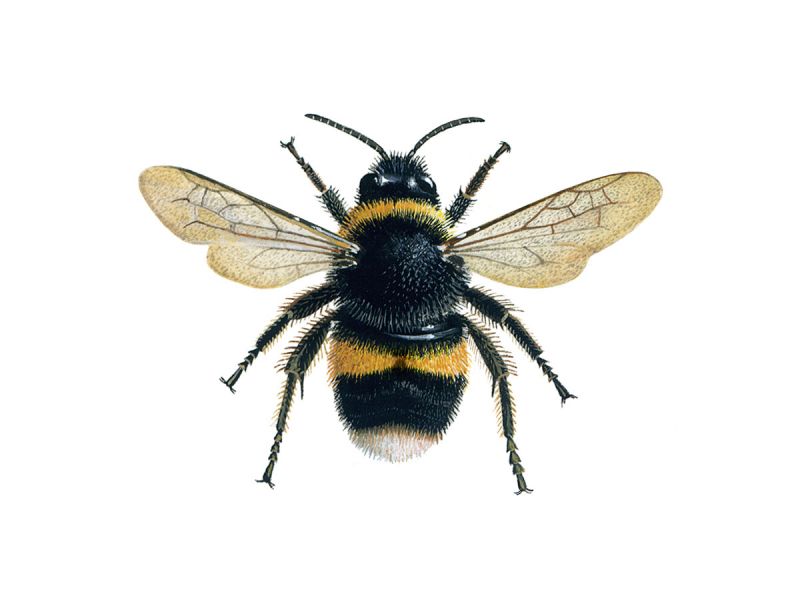Colin mulls over the chances of some good spring honey, what we can do to avoid honey fraud and how to deal with honeybee swarms.
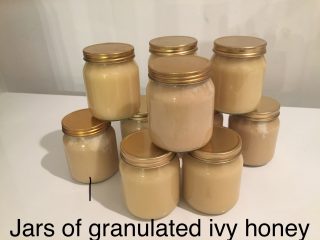
I was checking my colonies through the perspex crown-boards recently when I noticed that an over-wintered nucleus in a poly hive was growing like topsy and the bees were drawing comb in their super like there was no tomorrow. Brilliant! But it just goes to show how different bee colonies can be at this time of year. Most of my colonies are not in poly hives and at home are in a much colder, less sheltered apiary than many other more fortunate beekeepers, and whilst the bees are growing rapidly in numbers, they have not yet started building new comb in the wooden hives – the weather is too cold. It needs to be consistently warm over a period of days before such activities will start in my apiaries.
Then a call from the site owner of one of my out-apiaries – “There’s no activity from any of the hives – I think they’ve died!”. I asked if he’d seen them on the day he rang, which was cold and blustery. No, he hadn’t, but he’d noticed the problem the previous day (so why not phone me on that day rather than the day after? If they’d been on the brink of starvation, I would have had that little bit more time to help save them if he’d phoned straight away). I knew, though, that, having checked them the previous week, that they would likely be fine, certainly as far as stores were concerned, and it was just a chilly time of day that he’d watched the hive for signs of life. He said he’d keep an eye open for them and let me know what he saw. He phoned back the next day – “The girls were fine”! The trouble is, at the moment, one day can be like Winter whilst the next can be like late Spring. On the latter, the bees will be flying, as they certainly have been over the past month, whilst on a chilly day they are like us – staying indoors until it’s warmer. As things are at present, I think we’ve skipped a proper winter this year again so am hoping we are looking at the start of spring.
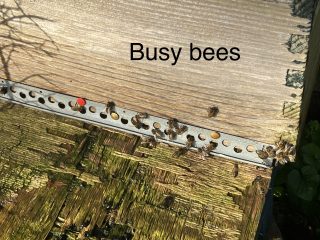
However, we had similar weather last year as well and I warned readers of the likelihood of many colonies starving if the mild-ish weather continued before the Spring flowers had started yielding nectar for the bees to collect. I also warned of early swarms (which there were), a warning I will re-iterate this year. The problem is, whilst the weather is warm enough on some days for the bees to fly and search for nectar and pollen (and I’ve seen both going into my hives recently), it is not warm enough to perform an inspection of the brood box to see what is happening at close quarters – at least not in my apiary locations, which are mainly quite exposed. I know the queens are increasing their laying rates and that the number of bees in most hives is growing rapidly, so if I don’t/can’t open the hives up soon, the bees will be seeking more appropriately sized premises! What a dilemma! If only they will hang on until I can take a look inside, then we might end up with colonies large enough to bring in a Spring crop of early honey, which would be very nice indeed. Spring honey is a lot lighter in colour and thinner in texture than main crop honey harvested in July/August time, but it has a delicate flavour which singles it out as a crop worth having in more ways than one. I still have the odd pot or two of honey from Spring harvests two or three years back – and it’s still runny, whereas some of last year’s main crop honey started to granulate quite soon after bottling. This is down to the crops that the bees foraged on and the mix that was available at the time of their gathering.
Nectar secretion is so fickle in plants – it depends on air temperature, soil temperature, air humidity, soil water content, the amount of sunshine, the amount of rain, soil type (acidic/alkaline) – and so it goes on. Last summer, for example, which in essence seemed not to be too bad weather-wise, was totally inappropriate for large honey crops, for the reasons above. That’s why beekeepers are always optimistic – this year could never be as bad as last year! However, watching the bees today I saw pollen going into the hives – pale lemon (most likely maple), bright yellow (willow?), even orange – so there’s plenty of forage around for them to work at last. We have viburnum, aubretia, valerian all in flower and being foraged on by my bees, and the blackthorn is also starting to flower – an excellent plant for both nectar and pollen – so I am starting to relax a little about the availability of stores for my girls and looking forward positively to the season ahead. If the bees have made it this far through the winter, then I think they should be alright for the season ahead.
Whilst waiting for inspection time to start, I have just read a report in the Observer re-iterating what I have said many times before – don’t assume that because a jar is labelled “Honey” that that is what is in the jar!
All UK honey tested in EU fraud investigation fails authenticity test
Ten samples from Britain were suspected of containing cheap sugar syrup.
Adulteration of honey with cheap sugar syrup has been exposed in a new investigation by the European Commission, which found 46% of sampled products were suspected to be fraudulent. Ten honey samples from the UK all failed the tests. They may have been blended or packaged in Britain, but the honey probably originated overseas.
This is not the first time tests have suggested that UK shoppers may be being cheated on their honey, though supermarkets say they regularly test honey and audit supply lines.
The government said this weekend that it was investigating the results, but there was no risk to food safety. Officials say no single test can establish honey’s authenticity and research is continuing. The EU’s anti-fraud office (Olaf) said: “Such practices defraud consumers and put honest producers in jeopardy as they face unfair competition from operators who can slash prices thanks to illicit, cheap ingredients.”
The action was led by the European Commission’s directorate general for health and food safety, collaborating with the 18 countries that are part of the EU food fraud network (which no longer includes the UK since Brexit). It was also supported by the Joint Research Centre (JRC), the commission’s science and knowledge service, and Olaf.
Investigators tested 320 samples and found 147 (46%) were suspicious, where “at least one marker of extraneous sugar sources was detected”.
The report last Thursday by the JRC said honey imported from the UK had a suspicion rate of 100% and “this could be the result of honey produced in other countries and further processed in the UK before its re-export to the EU”.
In 2022, the UK imported more than 38,000 tonnes of honey from its biggest supplier, China, where there is a known risk of adulteration with sugar syrup. Country of origin labelling is not required for a blended product from more than one country, so many shoppers don’t know a cheap pot of honey probably originated in China.
I have said previously that if you see honey that is as cheap as 75p a jar, it is too good to be true. It’s unrealistic for people to be able to produce genuine honey at those prices. This shocking report is only a snapshot, but it indicated almost half the honeys were adulterated and it’s a growing problem. There is no proper enforcement or testing at the moment and people can get away with it very easily. So if you want to buy honey, as opposed to sugar syrup, buy local from known beekeepers who you know you can trust.
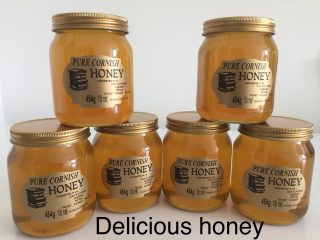
Honeybee swarms
Finally, it’s that time of year again when I ask you all to look out for honeybee swarms and to let me, or another beekeeper, know if you see any.
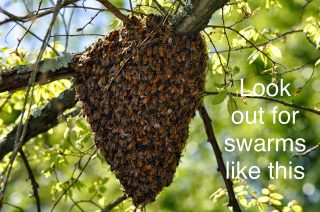
Telephone calls are best, as by the time I pick up an email telling me of the presence of a swarm, it will likely have found a new home and decamped. As you may know, if the swarm is not caught and treated for Varroa by a beekeeper, it will most likely die within 2 or 3 years, so at a time when the honeybees are under threat from climate change, habitat loss, insecticides, etc it is vital that we preserve and look after what we have. So please call and I’ll ensure somebody near you collects and hives the swarm safely – hopefully before it decides to make a new home in your chimney or roof space!
Colin Rees 07939 971104 01872 501313 colinbeeman@aol.com

